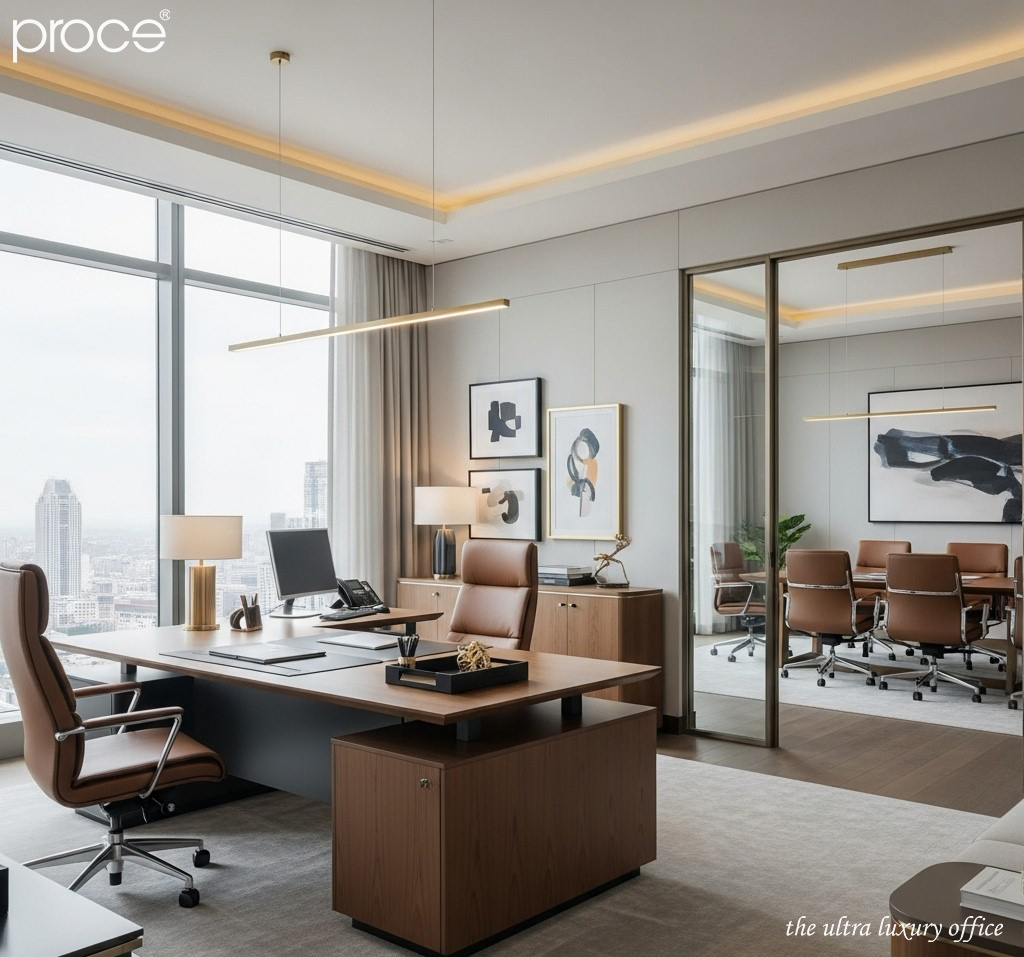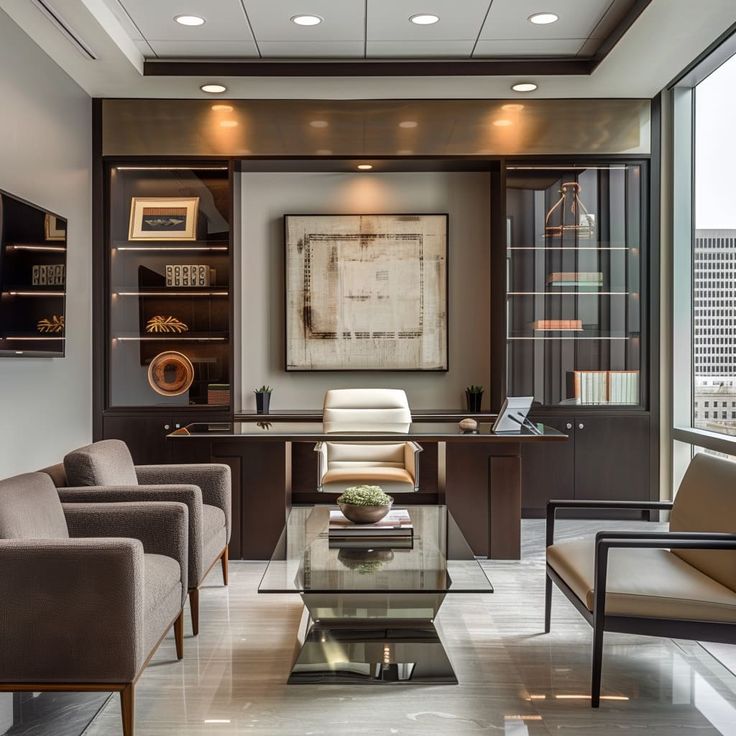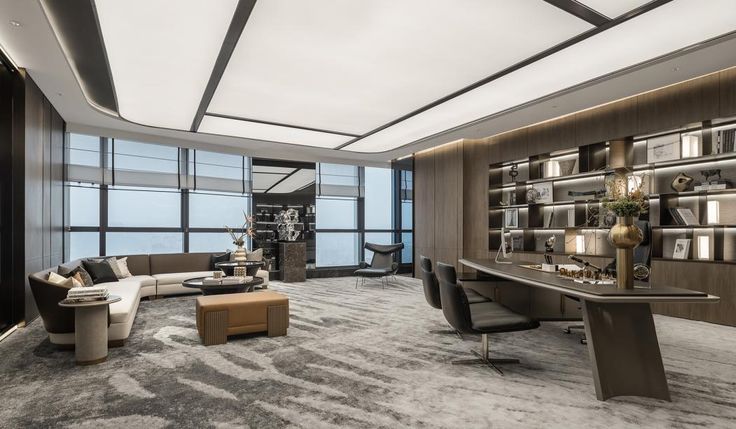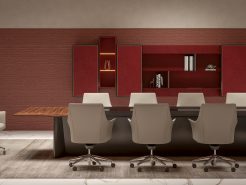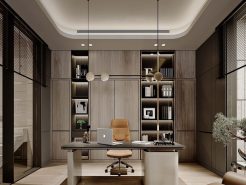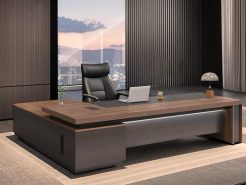In an era where air quality directly affects work performance and mental health. The designing the chairman office is not just about aesthetics or comfort. Air sensors – a seemingly small factor. But play a silent role in helping the workspace maintain freshness and stability. But where to install sensors, how many are enough and what to avoid to ensure accurate data? The following article will provide detailed instructions on the optimal location and principles of installing air sensors in the president’s office. Where every decision is made in the most standard space.
1. Principles of installing air sensors in designing the chairman office
Optimal installation location
When deploying an air quality sensor system in the president’s office space. The choice of sensor installation location is a key factor. It helps to ensure that the collected data has high accuracy and practical value. One of the first principles is to avoid installing sensors near air inlets or exhausts. Direct airflow from the HVAC system can distort indicators such as temperature, humidity, CO₂ or fine dust. This leads to inaccurate response of the control system. Negatively affecting operational efficiency and user experience.
The sensor should be placed at the user’s breathing level. That is, about 1.1 to 1.5 meters from the floor. This position helps to accurately reflect the quality of the air that people actually breathe. From there, timely and appropriate adjustments can be made to the ventilation and air filtration system. At the same time, it is necessary to avoid installing the sensor in locations with direct sunlight. Or near heat-generating devices such as photocopiers, televisions or high-power light bulbs. Because the heat from these sources can cause significant errors in the measurement.
Finally, the sensor should also be located away from devices that generate strong electromagnetic interference such as high-power Wi-Fi transmitters, mini-base stations or inverters. This not only helps maintain data stability and accuracy. It also contributes to extending the life of the device, ensuring long-term, reliable operation.
Sensor density and number
Determining the density and number of air quality sensors to be deployed in a space depends on many factors. Of which, area, interior structure and usage density are the most important criteria. For rooms with small areas, about 12 to 25 square meters. Normally, installing only one central sensor is enough to ensure effective monitoring. However, if this space has obstructing factors such as glass walls, thick curtains or large furniture that obstruct air measurement. It is necessary to recalculate to ensure that the gas dispersion is correctly reflected in the measurement. From there, it is possible to consider installing an additional measuring point.
Human factors also directly affect the decision to place sensors. Personal spaces such as the president’s office – where the density of people is low and the usage time is stable. Only one sensor is needed to be placed in the center. However, if this room often holds group meetings, internal discussions or has a flexible number of people. Consider placing two sensors in two symmetrical positions. To ensure that the measurement data is uniform and reflects reality.
For integrated meeting rooms with an area of over 30 square meters. Deployment of two to three sensors is necessary. The sensors should be placed in symmetrical positions in the space. To avoid “blind spots” in air quality monitoring. Ensure maximum accuracy and efficiency for the accompanying air conditioning and filtration solutions. (Characteristics of the air sensor system in the chairman’s office meeting room).
2. Suggested sensor layout for a typical chairman’s office
In specialized working environments such as the president’s office. Where not only personal work takes place but also can be integrated with receiving guests or quick meetings. The arrangement of air quality sensors needs to be done reasonably to ensure accuracy. Coverage and the ability to reflect actual conditions.
For typical rooms of 20 to 30m². Usually consisting of a desk area and a small reception area. The optimal solution is to install a sensor in a central location near the desk – where the chairman spends most of his time during the day. This sensor plays a key role in recording indicators such as CO₂. Humidity and temperature in areas with high and frequent intellectual activity. If the room has a separate reception area. Especially where there is a sofa or a round table for quick discussions. The addition of an additional sensor is necessary to capture the air quality in this area. Which can vary significantly when more people attend.
For presidents’ rooms with integrated quick meeting functions and larger than 35m². The structure is often more diverse, including individual desks combined with internal group meeting areas. In this case, one sensor should be fixed at the desk area. The remaining two sensors should be placed in symmetrical corners of the room. Away from artificial air sources or heat generating equipment such as printers, air conditioners. To ensure honest and balanced measurements for the entire space used (Features of Collage art interior in the design of the president’s room).
3. Notes when choosing sensor devices for designing the chairman office
When choosing an air quality sensor for the president’s office. The first factor to prioritize is the type of sensor that can measure multiple indicators. Including CO₂, PM2.5 fine dust, volatile organic compounds (VOC), temperature and humidity. These parameters help to assess the overall indoor environment. From there, appropriate adjustments are made to ensure health, work performance and comfort for users.
In addition, the sensor needs to be able to connect smoothly with the HVAC system – smart air filtration. Allows for automatic adjustment of air flow, air filtration or cooling based on real data. In addition to technical factors, the ability to secure data and remote control via mobile applications. Or web interface is also an important criterion. Helps users manage comprehensively and feel secure about personal environmental information.(Common mistakes when designing the president’s office).
Conclude
An ideal working space for the chairman cannot lack the presence of modern air monitoring technology. It both protects health and optimizes leadership performance. Placing sensors in the right position and in the right quantity not only helps to accurately record air quality. It is also a wise step in the strategy of building a smart, classy working environment. In the design of the chairman’s office – where each decision can change the whole business. Every small detail such as air sensors also needs to be carefully calculated. Investing properly in the smallest things is how a leader makes the biggest difference.
=====\
PROCE – TOTAL LUXURY OFFICE SOLUTION
Website: https://proce.vn/
Youtube: https://www.youtube.com/@noithatvanphonghangsang
Fanpage: https://www.facebook.com/vanphongnhapkhauProce
GG Business: https://business.google.com/dashboard/l/15115233216900975876
Linkedin: https://www.linkedin.com/company/74359718/admin/
Hotline: 090.115.6767
#thiet_ke_phong_chu_tịch; thiet_ke_phong_chu_tich_chuan_sang;
#thiet_ke_noi_that_phong_chu_tich; #thiet_ke_phong_chu_tich_dang_cap
#noi_that_trong_thiet_ke_phong_chu_tich; Proce_thiet_ke_phong_chu_tich
#thiet_ke_phong_chu_tich_chat


